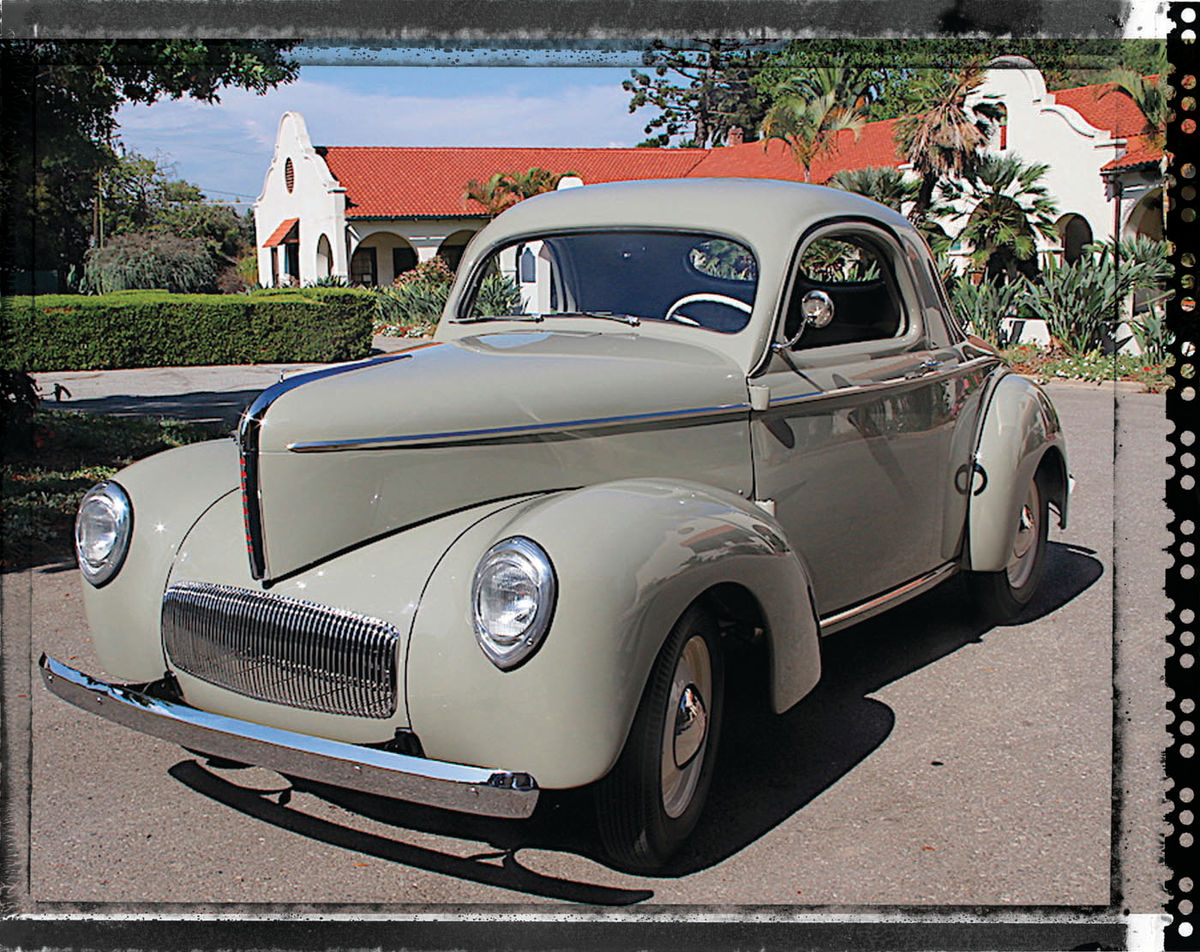1941 WILLYS AMERICAR COUPE
This Compact Vehicle Generally Has One of Two Distinct Personalities: It’s Either a Sedate Commuter or It’s Roaring Down a Drag Strip With a Blown Mopar Hemi.
My memories of Willys coupes are primarily of those piloted by guys like Big John Masmanian at Lions Drag Strip in Long Beach, California, in the early 1960s. These cars would creep to the start line with their monstrous blown Chrysler Hemis rumbling so loud that I could feel the shockwaves in my feet and chest and then Big John would launch his A altered gasser with a thunderous roar, leaving a swirling cloud of acrid white tire smoke in his wake.
It was spectacular, even though it was over in seconds. Back in 1964 Big John turned 149 miles per hour in under 10 seconds in the quarter mile in his Willys Coupe. What was his secret? Simple. Put the biggest, most radical engine you could find in the smallest, lightest car you could find—top it off with a GMC truck blower—and stand on the gas.
Guys like Big John succeeded in turning benign old cars such as Willys Americars, Studebaker Champions, and even tiny Fiat Topolinos into fire breathing monsters. I loved it back then, and so did a lot of guys my age. These hot rods were insanely dangerous, but compellingly impressive to any young motorhead.
Finding One for the Street…Not the Strip
These days I need to look after what is left of my hearing, and though I never paid much attention to the original Willys economy cars that were common when I was a kid, I recently became interested in learning what they were like to drive when they were just mild-mannered grocery getters.
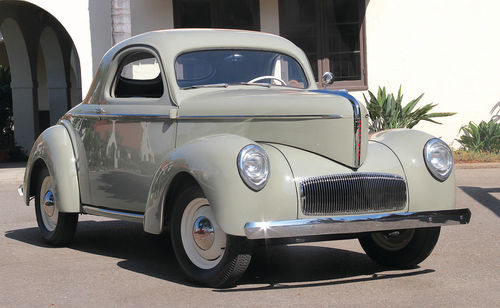
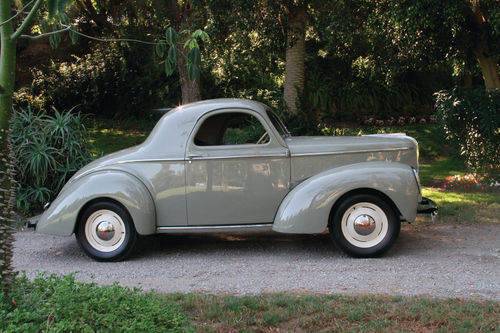
To that end, photographer Dave Gooley and I contacted Randy Lorenzen, who owns a major trucking company locally, and has very likely the best collection of Willys automobiles anywhere. He has several of the great Willys gassers of old, but more importantly for us, he has an extensive collection of impeccably restored original Willys’ too.

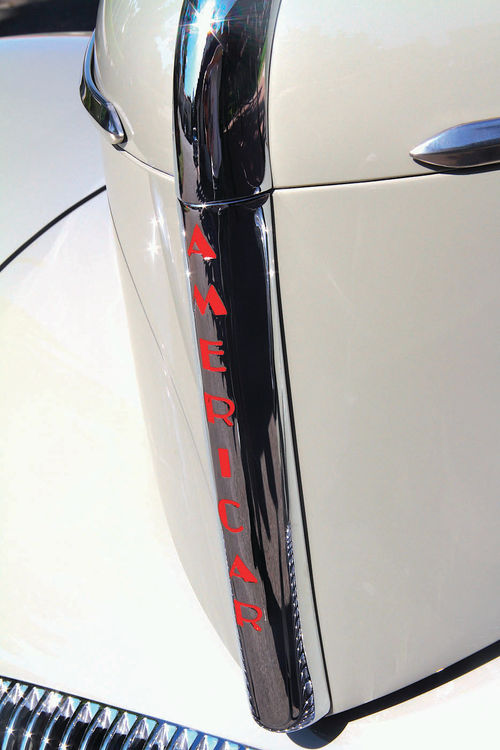
Out of Randy’s collection we selected a 1941 Americar coupe. It was the handsomest of the pre-war Willys by far. Stylist Amos Northup—who also penned the Graham Blue Streak, the Reo Royale and the Model A Ford Victoria convertible—designed the original 1937 model 37 from which the Americar evolved. And though it is a touch buxom, the car has its own look that is quite pleasing.
Heading Out for a Drive
Lorenzen shows us through his exquisite collection, explaining the various models and years, and then hands me the keys to his impeccably restored dove gray 1941 Americar coupe and I open the ample door and climb in. The interior is intimate widthwise, but quite comfortable, with plenty of head and legroom. The dash has a complete array of instruments in a stylish horizontal panel that’s placed in the center, flanked by glove compartments on either side.
Everything is within easy reach.
I slide out the choke, twist the key, and depress the starter button. The little Go Devil 134.2-cubic-inch flathead four-banger starts on the first turn. It soon settles into a steady idle as I ease the choke back in.
I depress the clutch and pull the column shift into low, give it a little gas and we are away.
Acceleration is surprisingly good, though the little motor exhibits a slight vibration typical of a four-cylinder engine, and runs out of revs a bit quicker than a six from the era. The clutch is smooth and light, and shifting is seamless. Second gear is fairly long, and then I shift into high. The torquey little 63-horsepower mill pulls well. We soon reach a comfortable cruising speed of around 50 miles per hour. The car is actually capable of 65 miles per hour at the top end, but that would be asking a lot, even though the engine is rugged and well-designed.
An Efficient “Town” Car
Fifty miles per hour may sound slow today, but keep in mind that the first high-speed super highway in Southern California—The Pasadena freeway—opened in 1940, and the speed limit on it was 45 miles per hour. Most roads of the day were marginal by today’s standards, and even the iconic highway 66—Steinbeck’s “Mother Road”—was only finally paved the whole way in 1939. For driving around town the little Americar is ideal because it is sturdy, nimble, economical and easy to park; and for the occasional longer trip it would be adequate.
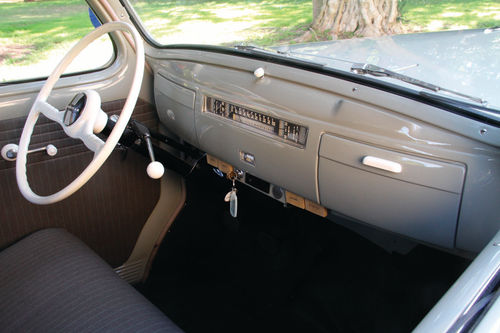

The little business coupe steers easily, and corners reasonably well for the era. Most cars around this time were softly sprung and had independent front suspension, but not the Willys. Like the Fords of its day, it has a solid front axle, but unlike the Ford it sports longitudinal leaf springs all around, so it corners nicely and handles a variety of roads well, even though its suspension is basic, light, and truck-like. But with its light weight and short wheelbase of 104 inches, plus its rudimentary suspension, the car is a little jumpy on uneven roads.
Altogether, Lorenzen’s Willys is comfortable, quiet and enjoyable. Cars of this vintage often get a bad rap because after more than a half-century of service they usually rattle, steering is approximate, and braking is uneven and barely adequate. But when you consider the long, hard journey most of them have made, it is surprising that such cars are still mobile at all. And when they are properly restored as this car is, you realize just how well-designed and pleasurable they were when they were new.
I would venture to say that no car of the 1940s was any simpler, more durable or more practical than the 1941 Willys Americar either. So why did the company only manage to sell 22,000 of them that year? Well, for one thing, competition was stiff. The Americar sold for around $634, and its contemporary, the Raymond Loewy-designed 1941 Studebaker Champion, was available for a $660 base price. So for an additional $26 dollars you could get a bigger, more-stylish car with a larger six-cylinder engine, and overdrive as an extra cost option.
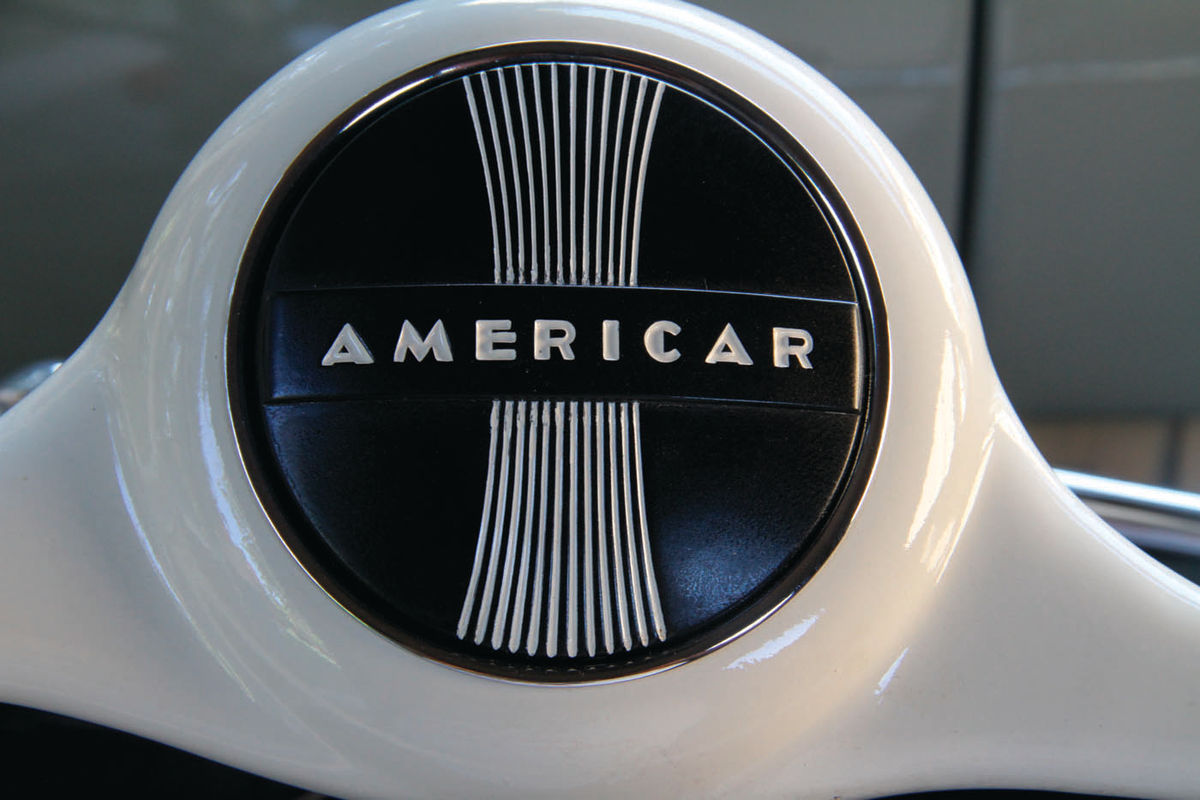

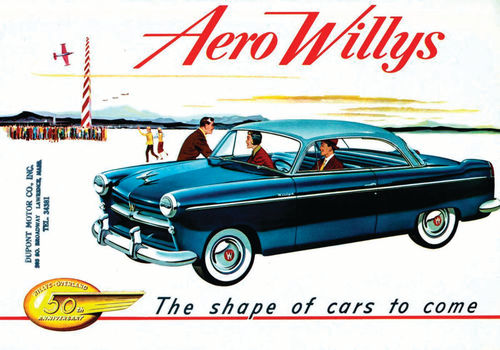

Willys Goes to War
The Willys Go Devil engine wasn’t just any flathead four though. After all, it propelled the American Jeep to victory in World War II. That’s because Joseph W. Frazer took control of Willys Overland in 1939 and had engineer Delmar “Barney” Roos redesign the original motor with better bearings, aluminum pistons, closer tolerances, and full pressure lubrication in anticipation of a possible military contract.
Ford and Willys vied for the rights to build the military Jeep (General Purpose Vehicle) with their own designs, but the winning prototype was actually the American Bantam entry. However, Bantam did not have the capacity to produce it in quantity, so the government awarded production to Willys and Ford. Willys refined and adapted the Bantam prototype—added their own engine—and it became the standard vehicle for the United States Army, and was produced in colossal numbers. Erwin Rommel “The Desert Fox” is purported to have said that if he had been issued Jeeps he could have won in North Africa.
Success With the PostWar Jeep Market
Willys Overland emerged from World War II in great shape, because a huge demand for jeeps and jeep parts continued. Indeed, there was a great need for a small, tough fourwheel-drive vehicle in the U.S. as well as places like the Philippines and South America. Jeeps were so popular that though Willys did market civilian versions of it as well as the Jeep Wagon, Panel Utility, and the stylish Jeepster, they did not resume regular passenger car production until 1952 when they debuted the compact Willys Aero.
Unfortunately for Willys, America wasn’t particularly interested in compact cars at the time. The Nash Rambler did sell fairly well, and survived to evolve into the Rambler American later. However, the Crosley, the Henry J, and the Willys Aero were seen as cheap cars, and most Americans who had to watch their budget opted for more substantial and stylish used cars instead. Furthermore, fuel mileage was not much of a consideration in the early ’50s when there was a gas station on every corner and fuel was selling for as little as 25 cents a gallon.
Another factor that hurt the post-war Willys was that the Big Three—General Motors, Ford and Chrysler—controlled the market by benefiting from economy of scale, and were having price wars among themselves. The Aero was a nice-looking car and certainly durable enough, but it was not a car that you would show off to the neighbors when you brought it home for the first time.
Only the Jeep Remains
In 1953 Kaiser Motors purchased Willys Overland and changed the name to Willys Motors. Jeep production was steady, but after the last Aero came off the line in 1955 in the U.S., Aero tooling was shipped to Brazil where the little car was produced from 1960 through 1962 virtually unchanged.
So Willys in all of its manifestations over the years finally faded away, except, obviously, for its most successful product—the Jeep—which still has a following today. American Motors bought the rights to Jeep in 1970, and it is now part of Fiat Chrysler, which purchased the rights to the Jeep from AMC in 1987. After all, the idea of a fourwheel drive sport utility vehicle that can go anywhere is more popular than ever.
Things Were Very Different A Century Ago
Those of us of a certain age still remember the last of the Willys Overland automobiles, but in its longago halcyon years, it was second only to Ford in sales. That was between 1912 and 1918 when the Model T ruled the roads. John North Willys bought nearly bankrupt Overland in 1907 and formed the Willys Overland Corp. He was somewhat like Billy Durant of General Motors in that he kept expanding and buying smaller car companies, as well as component makers, until Willys had built a formidable empire of his own during the teens.
But by 1920 the recession that followed World War I had taken a toll, and the company was carrying quite a lot of debt, so the bankers put Walter P. Chrysler in charge briefly, though he soon left and went on to form his own company. John North Willys was ultimately able to weather the downturn and build the company back up to third place by 1928. And then, being very astute or quite lucky, he retired in 1929 and sold his shares in the company for a cool $25 million before the stock market crash.
Willys couldn’t have timed his departure better, because the Depression put Willys Overland into bankruptcy by 1933, at which time he was named president again with the hope of reviving the company. He managed to turn the company around once more before suffering a heart attack in May of 1935. He was recovering from that when a stroke took his life in August at age 61.
Is That Willys Real or Fiberglass?
Over the years Willys Overland had built a number of successful automobiles, from the economical Whippit, to the upscale Willys Knight that sported a sleeve valve six-cylinder engine.
But when the company came back from bankruptcy in the mid-’30s, they went exclusively with smaller, more economical and inexpensive offerings.
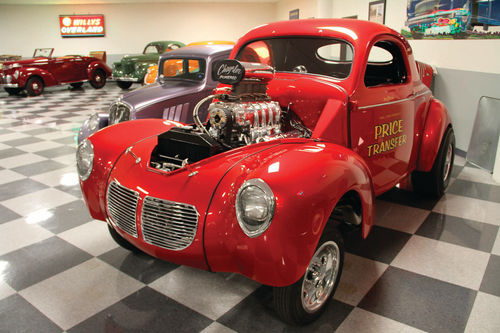

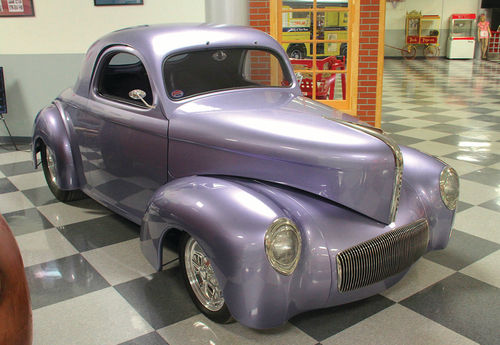
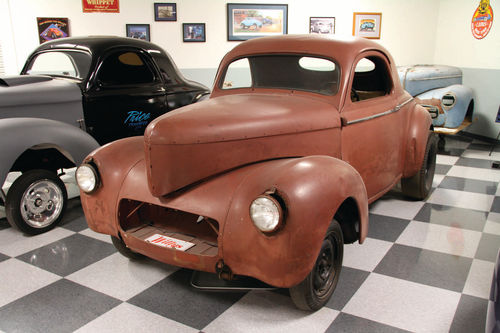
They had been building the model 77 during the lean years, which was an earlier small car, and out of it evolved the extensively redesigned model 37 in 1937, which in turn developed into the 1941-42 Americar. Only 7000 of the 1942 models were completed before World War II halted civilian production, making them quite rare today.
The main difference between the 1941 and ’42 is that the ’42 has a split grille, while the ’41 has a continuous one-piece type. But these days you are extremely unlikely to see either year in restored or original form. Almost all of them were snapped up years ago and sacrificed to make hot rods. Those cars were and still are in such demand that there are fiberglass companies that have been around for years making replica bodies.
The Memories Will Live On…
But Randy Lorenzen’s little Willys Coupe isn’t a replica, it’s the real thing and it is delightful. It is easy to drive, comfortable, and has a Streamline Moderne style all its own. People on the sidewalks turn and give us thumbs up as we roll by. I am a bit wistful that there are so few originals left, and that the ones that do exist go for big bucks, because I would love to have one for Sunday drives.
Someone once said that great design is not when there is nothing else to add, but when there is nothing else to take away. And if that is so, the Willys Americar is the very essence of good design. It is all you need and no more.
We cruised around historic Rancho Dominguez nearby, and then convened with Randy and his restoration expert Willy Stroppe (son of legendary race driver Bill Stroppe) for a late lunch where we started to wax nostalgic. We were almost reduced to tears recalling Lions Drag Strip, which is no more, and that the roar of Big John Masmanian’s, not to mention Junior Thompson’s and Lefty Mudersbach’s thundering A gas coupes is just a memory.
We decided then and there that a monument should be erected where the drag strip once stood, and we swore vehemently that we were going to do something about it.
I left after a couple of beers, but the other guys were serious. They made it happen, and as of June of this year you can now visit the Lions Drag Strip Museum. They don’t accommodate walk-ins at this point, but you can make reservations at www.thelionsdragstrip.com or contact them by writing to:
The Lions Drag Strip Museum
2790 E. Del Amo Blvd.
Rancho Dominguez, CA 90220
Willys Americar Specifications
•Base price: $634
•Production: 1941-22,000; 1941-7000
•Wheelbase: 104.0 in.
•Length: 170.0 in.
•Weight: 2116–2512 lb.
•Engine: Inline 4; 134.2 cubic inches
•Horsepower: 63
•Price new: $634-$978

